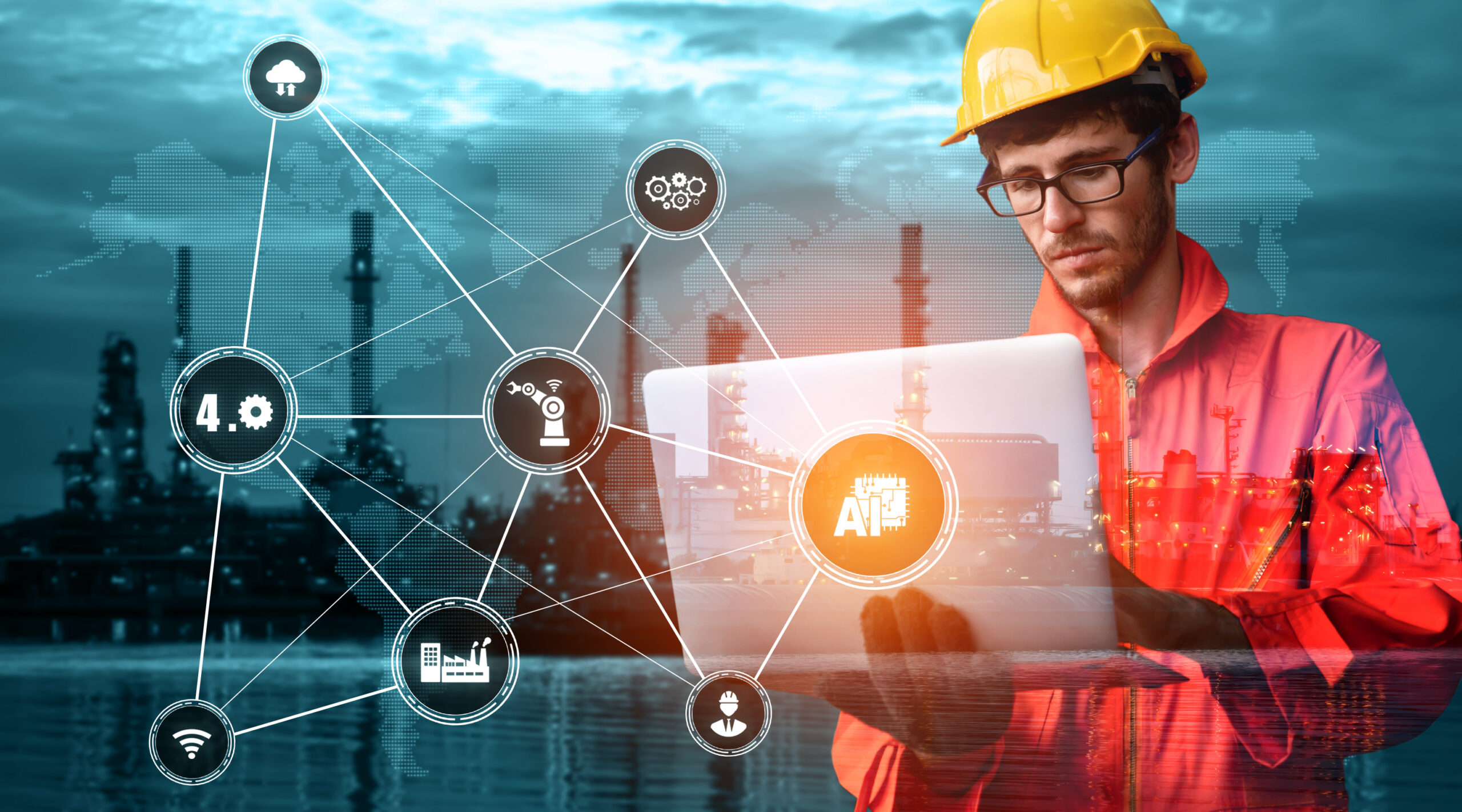AI gives oil and gas industry an eco-boost
The role of Artificial Intelligence (AI) and other digital technologies in improving the environmental footprint of oil and gas firms is becoming ever more crucial.

The role of Artificial Intelligence (AI) and other digital technologies in improving the environmental footprint of oil and gas firms is becoming ever more crucial as awareness of climate change grows but it is the impact on the industry’s bottom line that could really propel its usage, say analysts.
Digital technologies are already involved in a vast area of the oil and gas industry, including remote working and predictive maintenance, digital oil fields – which replicate the behaviour of an oil or gas field on a computer – and all levels of the supply chain.
Experts say that using AI to lower greenhouse gas (GHG) emissions is indeed ‘smart business.’ A case in point is at the well. Rig failure costs money so applying AI to predictive maintenance is a solution that is growing in popularity.
Rhidoy Rashid, an Energy Transition analyst at UK-based consultancy Energy Aspects told Gas Outlook: “The use of AI can help producers reduce their energy use. For example, Repsol has developed an energy management system which utilises AI algorithms to manage its energy use efficiently. Another example is ExxonMobil, which has utilised AI for autonomous drilling in its Guyana operations, helping improve operational efficiencies.”
Meghan Macdonald, an ExxonMobil spokeswoman, told Gas Outlook that the technology is groundbreaking: “We are the first in our industry to utilise this technology that leverages artificial intelligence to determine the ideal parameters for drilling.”
Macdonald was also able to confirm that it will be rolled out elsewhere. “We’re also testing this type of technology in the Permian Basin,” she said, adding that a total depth has now been reached on the first of a planned three horizontal wells in the Permian in the United States.
In two papers published by Boston Consulting Group (BCG) entitled The AI Angle in Solving the Oil and Gas Emissions Challenge and Reduce Carbon and Costs with the Power of AI, the consultancy explains that digital tools can help companies uncover, “the fastest and most effective path” to abating the oil and gas industry’s greenhouse gas emissions.
“The great strength of AI lies in its ability to learn by experience, collecting massive amounts of data from its environment, intuiting connections that humans fail to notice, and recommending appropriate actions on the basis of its conclusions,” BCG said in the carbon and costs report.
Digital twins and sustainability
Technology companies have spotted the opportunities and are now piling into the oil and gas sector. Late last year, Kongsberg Digital, the digital branch of global technology company Kongsberg, joined in a strategic partnership with FutureOn, a global energy software company, to bring together their digital twin platforms, which are virtual representations of oil and gas fields, for energy projects.
In a statement, Kongsberg Digital’s sustainability lead, Brian Carey, explained how important digital twins are to sustainability in the oil and gas industry. “Digital twins are the key to unlocking information that will improve environmental performance and productivity of assets…By using digital twins, oil and gas companies can contextualize all assets including hydrogen, CCS, wind, and electrification to support the energy transition.”
Rashid told Gas Outlook that by using digital twins operators can “visualise subsurface structures that could prove useful in maximising capture rates at CCUS plants, which currently average around 90%.”
In February 2021, Shell, Baker Hughes, C3 AI, and Microsoft launched their groundbreaking Open AI Energy Initiative™ (OAI). This is an open ecosystem of AI-based solutions for the energy and process industry that provides an open framework for various energy and software stakeholders to build and offer interoperable solutions on BHC3™ AI Suite and Microsoft Azure.
At the end of the year, Shell announced that three of its products will now be made available, through the OAI. These are: the Shell Process Optimiser for LNG, which marries LNG process engineering and technology with data analytics; the Shell Corrosion Advanced Risk Modelling and Analytics tool, which makes use of data analytics to predict internal corrosion and erosion; and the Shell Autonomous Integrity Recognition tool that allows inspectors to use automated image capture and evaluation to support the execution of external integrity inspections.
In a statement, Dan Jeavons, Shell Vice President of Computational Science and Digital Innovation said, “The products announced have already been deployed at Shell and have been proven to either create operational efficiencies and savings or generate additional revenue and opportunity.”
Laura van Lingen, a Shell spokeswoman, told Gas Outlook: ”In addition to the [three] product launches, in November 2021…select solutions that are built on the Kongsberg Digital or MathWorks platforms are expected to be available through the OAI, beginning in 2022. These offerings will be interoperable with existing OAI solutions…Trials are underway at Shell to demonstrate the business value of these integrated offerings.”
DataRobot, a US-based AI solutions provider, is also moving into the oil and gas space. “The oil and gas industry is beginning to see the incredible impact that AI can have on every sector in the value chain. The opportunities for AI strike directly at the greatest challenges in today’s oilfield. Companies that effectively leverage AI will have a distinct advantage over other operators that lack accurate understanding of their reservoirs, operating processes, and producing assets,” it said on its website.
AI hopes for scope 3 emissions
CO2 equivalent emissions are typically classified as scope 1, scope 2 and scope 3. The oil and gas industry is responsible for 10% of global GHG emissions through its direct scope 1 emissions from operations and another 31% through its indirect scope 2 and scope 3 emissions.
Much attention has been directed towards abating scope 1 and scope 2 emissions. “Companies themselves can decrease scope 1 and scope 2 emissions through operational and energy efficiency initiatives, the fastest, and often lowest-cost, pathway to decarbonisation,” said BCG.
But the task must also be to focus on the more difficult indirect scope 3 emissions, the consultancy added. “As critical as it is to reduce scope 1 and scope 2 emissions, the difficult truth is that for most oil and gas companies, scope 3 emissions can account for 90% or more of their total emissions footprint. These emissions must also be significantly limited if the industry is to make a real dent in the world’s overall carbon emissions.”
However, as Rashid told Gas Outlook: “Although the use of AI can help producers reduce their energy use, ultimately enabling them to reduce scope 1 and potentially scope 2 emissions it is unlikely to affect scope 3 emissions.”
One difficulty according to BCG is that “there are no set industry standards for measuring and reporting on scope 3 emissions, making it difficult to compare scope 3 emissions footprints across operators or to set emissions targets on the basis of competitive benchmarks.”
However, it is precisely this difficulty which the consultancy believes could ultimately provide AI with its breakthrough role in scope 3 emissions reduction. “It is the sheer complexity of establishing a baseline for scope 3 emissions that makes it essential to use AI-based tools,” it said.



